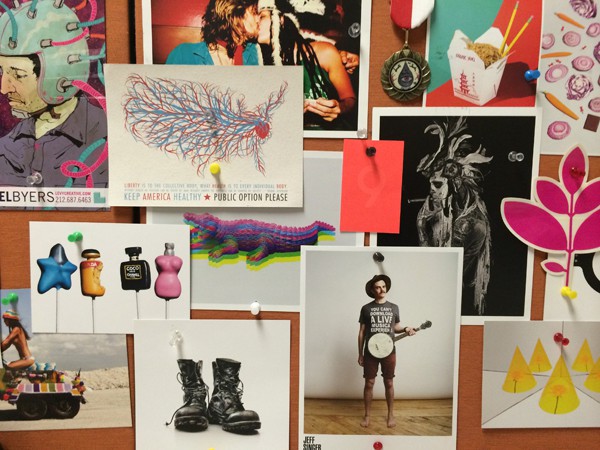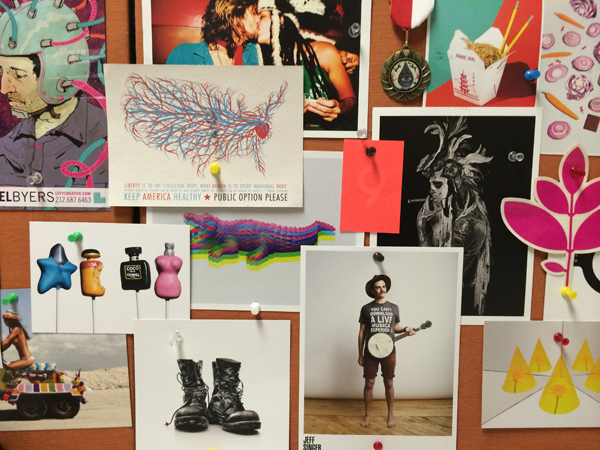Share
12 Tips to Approach Photo Buyers the Right Way
Based in California, Kristina Hicks is a Creative Consultant for Agency Access. Previously an art buyer and producer for Saatchi & Saatchi, Kri...

 Based in California, Kristina Hicks is a Creative Consultant for Agency Access. Previously an art buyer and producer for Saatchi & Saatchi, Kristina has worked on advertising campaigns for huge clients like Toyota, Volkswagen, Proctor and Gamble, The Truth Campaign, and many more. As a Creative Consultant, her role is to help primarily editorial and commercial photographer clients get to the next level in their work—whatever that next level may be.
Based in California, Kristina Hicks is a Creative Consultant for Agency Access. Previously an art buyer and producer for Saatchi & Saatchi, Kristina has worked on advertising campaigns for huge clients like Toyota, Volkswagen, Proctor and Gamble, The Truth Campaign, and many more. As a Creative Consultant, her role is to help primarily editorial and commercial photographer clients get to the next level in their work—whatever that next level may be.
“I’m here to be helpful” she says, and that can mean just being a set of fresh eyes on work or being a “sounding board” for a new idea. Kristina chatted with us for a webinar about getting hired by ad agencies, and here were her top 12 tips on approaching photo buyers the right way.
1. Pitch to the person within an agency who can hire you
You want to connect with the people who can hire you. Those are the photo editors, art buyers or art producers or creative buyers. Get to know the people in those roles. They might not be able to hire you now, but when something comes up that your work is a fit for, they’ll remember. Also, be sure to get to know the creatives as well. They need to know about you and you need to know about them. What are they working on? Get to know your art directors and creative directors by following them on LinkedIn or their social media networks.
2. Approach buyers on social media
You can approach buyers via social media networks. It’s important to do your research to see if your work applies to the brand or the person you’re contacting. Once you know, reach out and say hi. Sometimes a quick email or a connection on Twitter or Instagram is easier than a phone call or a meeting—remember that art producers and creatives are very busy. You want to get to know these people in whatever way you can and then foster those relationships. People move around a lot from agency to agency and role to role. If you know someone on a more personal level, they will remember you and your work no matter where they are or what they are working on.
3. If you’re following a buyer’s work, let them know by sending kudos or congrats on a job.
It can be a good idea to shoot a quick email to a buyer or creative to let him or her know that you just saw the work they did with a recent client and you thought it was well done. All of a sudden you’ve made an instant friend and you can introduce yourself and your work later. We all like to be complimented on the work that we do because we’re all working hard too. Just the fact that someone out there is paying attention makes us feel good. It’s a way to make contact and work towards that lasting relationship.
4. Send printed promos
The most important thing to do when approaching a buyer is selecting your best images for your portfolio and showcasing the type of work you want to be hired for. When it comes to choosing images, get a second set of eyes on your selections. The images you’re using don’t have to have been made for a paid job. What matters is that the images are consistent with the look and feel of your website, portfolio or printed book. The images you choose to send out should exemplify what it is that you do.
You can keep mailers simple. One hero image printed on one side of the card with your contact info on the front and the back is totally fine. However, pay attention to what the art lends itself to when it comes to printing—maybe matte works better than glossy, trifold versus a single page, etc.
5. Put your contact information and branding on the front and back of your direct mail pieces
If you make it to the ‘creative wall,’ once it gets stapled up there it doesn’t come down easily. You want your promo to make it to the ‘inspiration board’ of creative directors, so make it easy for them to find your contact information without having to remove the card and flip it over.
6. Send promos to multiple people within one agency, but don’t send 50 promos to one place
Target a handful of people who are in a position to hire you: photo editors, creative buyers, art producers and creatives. We want to connect with you as much as you want to connect with us. Note: You don’t need to send a promo to everyone. Let the promos walk themselves around. People often share.
7. Pay attention to print quality
Probably the biggest mistake photographers make when sending a printed promo is not having nice quality printing. It says a lot about your brand. If you don’t take the time to make sure the colors came out right, it reflects poorly on your attention to detail and what you’ll bring to a job.
8. Make printed leave-behinds similar to mailed promos, and have a little fun with them
These can be simple cards like direct mail pieces. Make sure the images you’re using are current. Have a little fun—make them memorable and something that people want to share.
9. When it comes to email promos versus mailers, mix it up and let your budget as well as new work decide what’s best
I think it’s always a good idea to do both. That said, email often is free. If your budget for that month is a little shy, out goes the email. When you have something that you’re proud of, news to share, or a home run, and you can afford to send something tangible, do it.
10. Don’t send e-promos and mailers more than once every 2 to 3 months
Any more frequently, and it can get a little annoying. People might start to unsubscribe from your e-newsletter or e-promo list. Remember that buyers can get hundreds of emails every day, so be mindful of building that relationship.
11. Pay attention to email subject lines
Subject lines are really important. You want to break through the clutter. The way you can accomplish that is by being direct and to the point. I want to know what I’m going to be looking at. Will it be product photos, an illustration, celebrity portraiture; and are the images from a particular campaign? If it’s a campaign for a brand or person that can be identified with, like Coca-Cola for example, put that in the subject line. It can be simple: “portrait of…” or “a fashion story…” or “Coca Cola’s latest.” I always recommend that a photographer include his or her name in the subject line, too.
12. Personalize e-promo messages whenever you can. However, do not make them too personal if you do not know the person.
Acting like you know a creative when you don’t is a turnoff. It’s important to be up front and say something like, “hey, we’ve never met before and I wanted to introduce myself.” It’s a way of being personal without being presumptuous and creepy.
Resources for staying current on campaigns as well as who holds creative roles within an agency:
Want more tips to attract photo buyers and win jobs? Check out our guide, 2013 Survey: What Buyers Want From Photographers.



